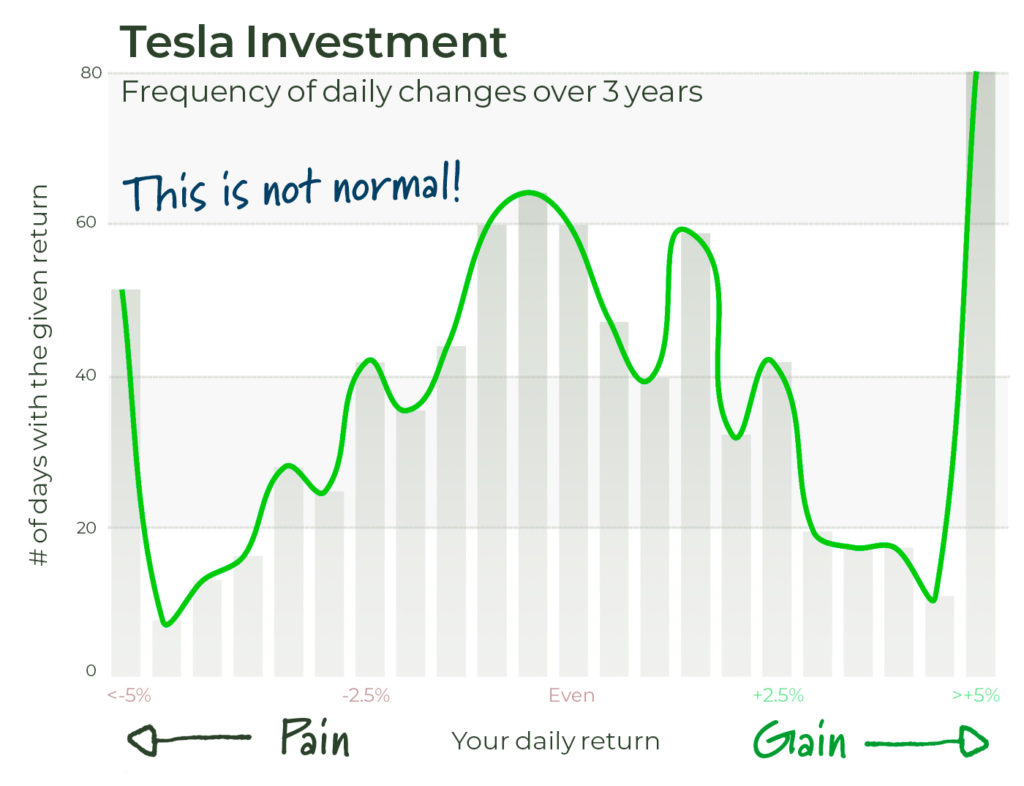Watching financial television is a kind of torture for me. The ignorance and misinformation is hard to take. One of the most misleading pieces of information on constant rotation is current prices.
Think about it. What useful information do the numbers that scroll across the screen night and day convey? What does it mean that Tesla is $702.12 or the S&P 500 is $4,141.04?
Nothing. These scrolling numbers cause feelings of fear or excitement (they can actually give you a dopamine hit) so that you keep coming back for more. In other words, they serve the purposes of the media company instead of yours.
I get worked up when I think about how some industries have figured out how to manipulate our brain chemistry to make more money for themselves. Retail financial services have joined the food industry in exploiting brain chemistry to keep us coming back for more. Even when it’s clearly not in our best interest.
That’s the price of free-market capitalism, I’m afraid. They’re just giving us what we think we want. But free-market capitalism also means that we are free to say, “Thanks, but no thanks!” We do that by educating ourselves and taking responsibility for what we put in our own bodies and minds.
So, this week we’re going to fight the noise by focusing on the “I = Invest” step of the RISK Rituals. We’re going to look beyond the surface of individual price quotes and talk about variance i.e., how much a stock’s price goes up and down over a given period of time.
Let’s start with the S&P 500 Index.
The chart below shows how many days the S&P 500 has gone up or down by different percentages over the past three years.
The tallest bar in the middle is the number of days the S&P 500 went up between 0% and 0.5% – 183 days over the past three years. That’s about one out of every four market days.
The next tallest bar to the left is the number of days the S&P 500 was down between 0% and -0.5% – 158 days, or 21% of the time.
The highest point is near the middle, then it slopes down gradually to the right and the left. It’s easy to see the familiar bell curve, which tells us the daily returns of the S&P 500 are normally distributed. “Normally distributed” means it’s kind of what we expect.

Why are expectations important? Because what throws most investors is when their investments don’t do what they expect. When our expectations get out of whack with market realities, strong emotions kick in, plans go out the window, knee-jerk reactions take over.
Now look at Tesla over the last three years. The bell curve has turned into a handle-bar mustache!

Whatever this distribution is, it is decidedly not normal. Statisticians would say, “Tesla has fat tails.” What can we learn about Tesla from this?
The far-left bar tells us that for 48 days, Tesla was down by more than 5%. The far-right bar tells us that for 74 days, it was up more than 5%. That means that once every six days, Tesla did something extremely unexpected.
Comparing the middle bars – where everything is going as expected – with the fat tails, Tesla actually had more days of unexpected price variance (122 days) than expected price variance (117 days).
Wild! And because the price of Tesla varies so much, it is regularly surprising and even shocking, which is why it gets so much media coverage. They use it to get your attention.
So, what do you do? When you see those scrolling numbers or breaking news on the price of a hot stock, tune it out! It’s meaningless. The information you need is how prices change over time – how prices vary i.e., the variance.
When you get pulled in by the hysteria, notice the feeling and then get off the dopamine rollercoaster so the financial industry can’t exploit fear and greed. After all, the Invest step of the RISK Rituals is about getting a return on YOUR investment, not the financial industry and media getting a return on its investment.
This is a big topic! We will talk more about it in the future, including how you can use variance to build a portfolio that works for you.
